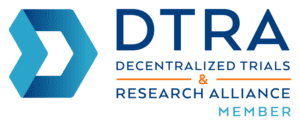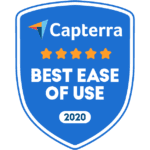Clinical research sites typically conduct studies with multiple sponsors/CROs. While this is great for generating revenue for the site, it can be a major challenge to manage regulatory documents across sponsors/CROs. Filing within regulatory binders across multiple studies tends to be inconsistent and very redundant.
Adding to this issue, paper-based processes associated with regulatory binders is inefficient and very time-consuming. At smaller sites, investigators may struggle keeping up with regulatory filing and clinical research coordinators are forced to spend terrible amounts of time performing clerical tasks (e.g., completing paperwork, printing, filing, routing forms, collecting signatures, etc.). Most research sites would agree that this time would be better spent recruiting study subjects and conducting study visits.

As research sites grow in size, they typically establish dedicated regulatory specialists that remove much of the regulatory burden from research coordinators and investigators. This is a great move for sites to make but this doesn’t solve the regulatory problem. Instead of making the regulatory process more efficient, the workload is merely shifted to another team member. This burden dramatically limits the amount of studies that a dedicated regulatory specialist can manage.
What if sites could streamline the regulatory process, allowing investigators and research coordinators more time to dedicate to the success of their studies while also providing regulatory specialists the ability to manage additional studies? A simple remedy is to standardize and centralize regulatory processes across studies. This can be achieved in four steps:
- Create a standard table of contents (TOC) for your binders and use it across studies. Having a standard TOC will create familiarity for your staff and make filing more efficient.
- Create a central filing system for training and qualification records. Instead of participating in redundant filing across studies, maintain one central location to include CVs, licenses, GCP training, and other general records. Sponsor/CRO monitors can access this central location as needed during monitor visits.
- Create a standard operating procedure (SOP) outlining your new process and ensure that all of the site’s regulatory SOPs are standardized across studies. Yes, sites may receive pushback from some sponsors/CROs but SOPs help keep your new process running smoothly by providing the site more ground to stand on. It’s important to articulate the site’s processes to your monitor in a way that is easy to understand. Ultimately, this new process is a benefit to sponsors because it increases quality and efficiency at the site while allowing the study team more time to schedule and conduct study visits to meet recruitment timelines.
- Adopt an eRegulatory system to create efficiencies at a higher level. A site-centric eRegulatory system, such as RealTime-eDOCS, allows sites to dramatically reduce costs associated with paper, supplies, working hours, and physical archiving. Using electronic signatures alone can save sites countless time routing documents and gathering signatures. To take full advantage of an eRegulatory system, it’s important for sites to adopt the entire system and move as far as they can towards being completely electronic.
With standardized processes at the site-level combined with technology, the industry is moving towards increased quality and efficiency. With this increase, sites have the opportunity to become streamlined while ensuring the long-term viability of their business, and sponsors/CROs continue to gain access to highly dependable research sites.
By: Nathan Levens, BS – eDOCS Product Manager, RealTime Software Solutions, LLC





